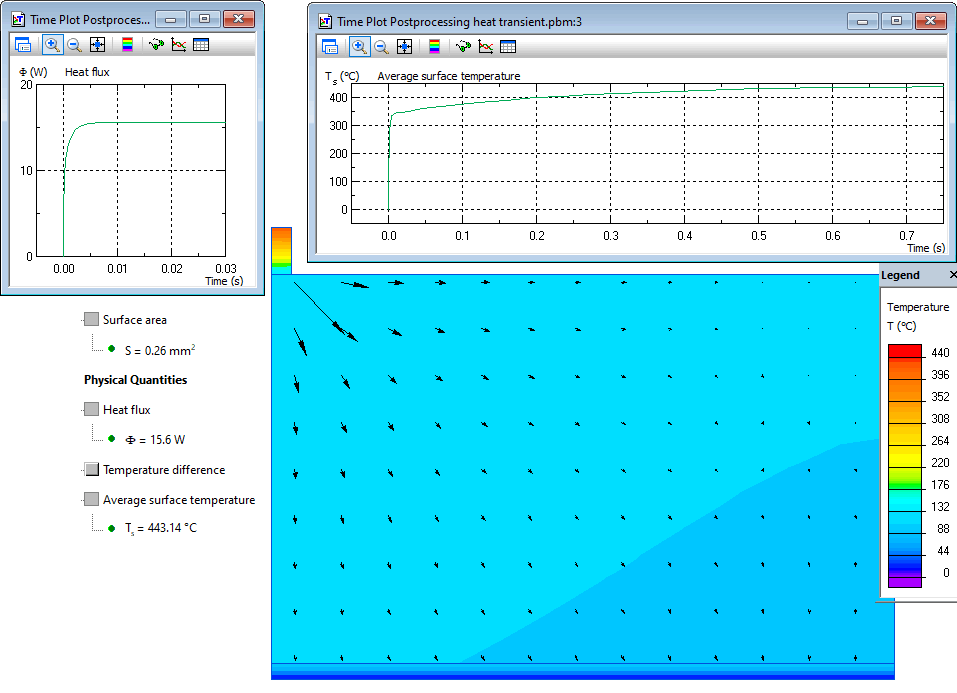Electronic device radiator
QuickField simulation example
The semiconductor device attached to a sapphire substrate installed on a copper header. The thermal resistance of interest is the resistance from the semiconductor device to the ambient.
Problem Type
Plane-parallel problem of transient heat transfer.
Geometry
The Rca block represents the known thermal resistance from the header to the ambient.
Model z-length is 4 mm.
Given
Thermal load of semiconductor device 60 W/mm².
Heat conductivity of blocks: sapphire 28 J/K-m, copper 394 J/K-m, Rca 1 J/K-m.
Mass density of blocks: sapphire 3985 kg/m³, copper 8950 kg/m³.
Specific heat of blocks: sapphire 3985 J/Kg·K, copper 8950 J/Kg·K.
Solution
The transient thermal resistance is calculated as the instantaneous temperature increase divided by the heat flux. A normalized curve can be obtained by dividing the instantaneous temperature by the final temperature.
Results
The shape of the graph can be qualitatively explained by the presence of two very different thermal time constants in the system. The first time constant corresponds to sapphire substrate (it works up to 0.005 sec.). The second time constant corresponds to copper header. The second time constant will be better visible if the simulation time is extended above 2 sec., so two simulations are necessary to visualize the system behavior.
Electronic device radiator temperature after 2 seconds:

- View simulation report in PDF
- Download simulation files (files may be viewed using any QuickField Edition).